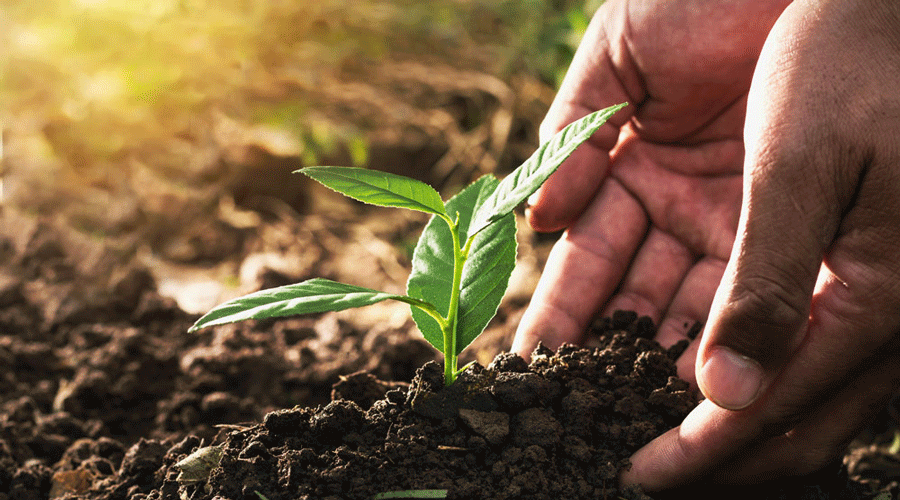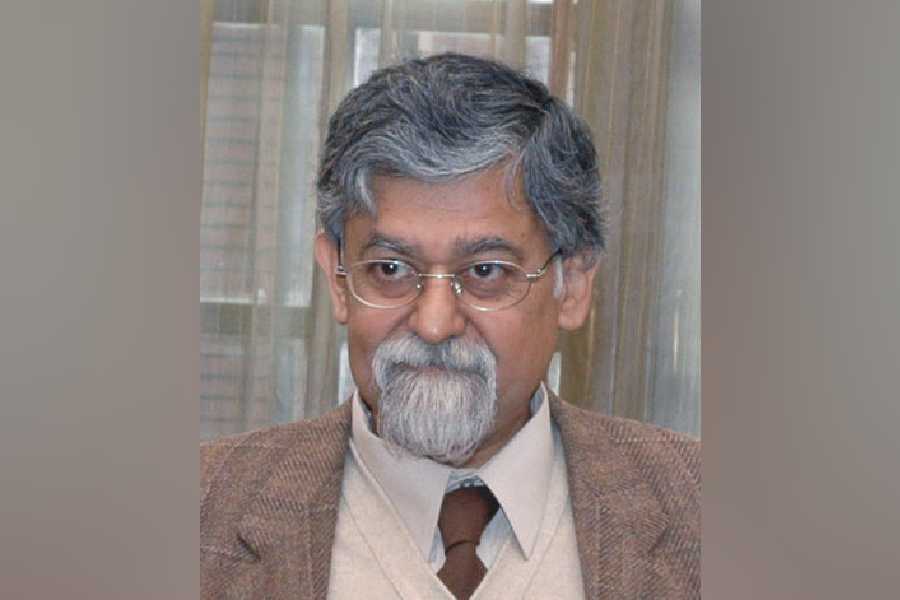With saplings in hand and faces veiled by colourful sarees, Suman and Sarita Takariya’s relatives sang traditional songs as the sisters planted small shrubs at their combined pre-wedding celebration in a remote Indian village.
Suman, 21, and Sarita, 19, who wed their husbands in a joint ceremony, are part of a growing trend in the western desert state of Rajasthan in which families gift and plant native trees as a new addition to their local customs and rituals.
“They are a part of our family now,” Sarita said as she cleaned her muddy hands after planting an oleander shrub.
“We will leave for our in-laws’ place, but they (the trees) will be here for our parents.”
The sisters’ wedding card said: “Protect nature and nature will protect us.”
From weddings, births and funerals to festivals such as Holi, and even family achievements like buying a new car, plants and trees have become centrepieces of local culture, helping to breathe life into the sandy soils of northwestern Rajasthan.
More and more villagers are adopting the practice as they see the benefits, whether easy access to fruit or cool shade, said Shyam Sunder Jyani, the man behind “Familial Forestry”, which aims to connect trees with families and their rituals.
But soil scientists warn that planting trees alone is not sufficient to combat the growing problem of land degradation.
Rajasthan is India’s largest state and also the most degraded when it comes to land, meaning it suffers a persistent decline in soil quality and its capacity to be productive.
Factors such as climate change, over-grazing, excessive cultivation, deforestation and urbanisation play a role in land degradation and desertification.
The problem affects people’s food security and incomes, and leaves them vulnerable to weather-related disasters such as drought.
“That is why it’s important to build green infrastructure because it creates a knock-on effect, combating everything from food insecurity to climate change,” said Jyani in Bikaner city, which is near the rolling dunes of the Thar Desert.
Trees can increase organic content in the ground, recycle nutrients, and boost the water-holding capacity of soil, as well as absorbing climate change-fuelling carbon dioxide emissions.
Soil also naturally absorbs carbon from the atmosphere through a process known as sequestration, which not only reduces harmful greenhouse gases but also creates more fertile soil.
Jyani said a proven way to ensure more tree planting was by making trees “green members” of families.
“When we personify a tree, then it connects the family emotionally... and that makes the tree a part of them,” said the 43-year-old sociology professor.
“By clubbing tree plantation with rituals and festivals, which are pillars of our social life, we make people empathetic towards their local ecology and surroundings.”
Fruitful gains
Rajasthan has few forests compared with other states. They make up just 8 per cent of its total land area, government analysis here and data here show.
But in the last 16 years, more than a million families from at least 15,000 villages in the state have planted about 3.5 million saplings as part of the “Familial Forestry” project.
More than a dozen participants in the programme told the Thomson Reuters Foundation they were literally enjoying the fruits — and flowers — of their labour, seeing increased ground water levels, improved crop yields, and ultimately more income.
“The trees have changed my life. The fruits are as sweet as the ones I had as a little boy. Birds that I had not seen in decades are back,” said teacher Brij Mohan Singh, as he gave out saplings to guests at a lunch event for his son’s wedding. “This is for my grandchildren, for the next generation. We have to leave a healthy environment for them, especially as the threat of (global warming) increases every day.”
Singh said he had planted five saplings at home and helped his school plant more than 7,000, which provide a cool canopy for students in the scorching summer heat, as temperatures often soar above 50°C.
“They say they feel like they are sitting in an air-conditioned room,” he added.
Laxmi Kant Sharma, a professor of earth sciences at Central Rajasthan University, praised “Familial Forestry” for tapping into India’s age-old roots of conserving forest resources.
But he warned that it was important to only plant indigenous trees as others often “become killers of native species of the desert” and can harm wildlife habitats.
Jyani, who won the Land for Life award here from the United Nations’ anti-desertification agency last year, said he teaches communities to plant only native species such as the Khejri, Rajasthan’s state tree, which requires very little water.
Rich soil, healthy life
India vowed to restore 26 million hectares of the country’s degraded land — or nearly 27 per cent — by 2030 when it hosted the UN Convention to Combat Desertification (UNCCD) conference here in 2019.
Almost 30 per cent of the land in India is suffering degradation, a report here by state-run space agency Isro found last year.
Rattan Lal, an Indian-American award-winning soil scientist whose moniker is the “Godfather of Soil Science”, is urging the government to start a scheme that would pay farmers Rs 2,325 ($30) for each tonne of carbon dioxide their land absorbs.
Such “carbon credits” are increasingly popular financial instruments, with companies or governments that want to “offset” their own emissions paying others to reduce or prevent the release of greenhouse gases for them.
Credits can support things like solar farms or planting trees, allowing farmers to monetise the carbon their fields soak up — though accurately measuring and verifying emissions reductions remains tricky.
Still, such credit systems can incentivise people “for doing good”, Lal said in a video interview from Columbus, Ohio.
Farmers often feed their crop residue to cattle and use it to make homes and fences — or even for cooking — when it could instead be returned to the soil to boost its organic matter.
Lal also suggested schools include more nature-oriented literature to spread environmental awareness early on.
Celebrity Indian spiritual leader Jaggi Vasudev — known as Sadhguru — is on a one-man mission to spotlight the issue.
He recently finished a 30,000km (18,640 mile) trip across Europe, West Asia and India by motorcycle to raise awareness about the deteriorating state of the world’s soil.
“Healthy soil and healthy life are inextricably connected,” Sadhguru said here at the annual meeting of the World Economic Forum in Davos last week. “In the next 10-15 years we can make a significant turnaround.”
In Rajasthan, Harinath Siddh said he had played his part by gifting and planting saplings at his wedding earlier this month.
“I wanted to show (my wife) that I care about the environment,” the 25-year-old said.
“And this way we will be able to care for these trees like they are our own children and watch them grow.”











